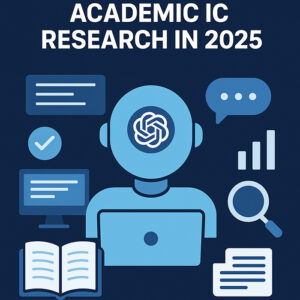The Future is Quantum: Understanding Quantum Computing
Introduction: A New Computing Paradigm
For over 70 years, classical computers have transformed our world, enabling everything from space exploration to smartphones. These machines, regardless of their size or power, all operate on the same fundamental principle: processing bits of information that exist in one of two states—0 or 1. This binary approach has served us remarkably well, but we’re beginning to encounter problems so complex that classical computers would take impractical amounts of time to solve them—billions of years in some cases.
Quantum computing represents a fundamentally different approach to computation. Rather than processing bits sequentially, quantum computers harness the strange and counterintuitive properties of quantum mechanics—the physics of the very small—to process information in ways that classical computers simply cannot. While still in its early stages, quantum computing promises to revolutionize fields ranging from medicine to artificial intelligence, potentially solving problems that have long been considered computationally impossible.
This guide will explore how quantum computers work, what makes them special, why they matter, and where this technology stands today. We’ll break down complex quantum mechanical concepts into understandable terms, examine real-world applications, and look ahead to what the quantum future might hold.
Fundamentals: Classical vs. Quantum Computing
To understand what makes quantum computing revolutionary, we first need to understand how it differs from the classical computing we use every day.
The Classical Computing Model
Classical computers, from the earliest vacuum tube machines to today’s advanced microprocessors, all operate on the same basic principles:
The Bit: The fundamental unit of information in classical computing is the bit, which can exist in only one of two states: 0 or 1. Physically, these states are represented by different voltage levels in electronic circuits.
Binary Logic: All computations are performed through logical operations on these bits (AND, OR, NOT, etc.), which transform input bits into output bits according to fixed rules.
Sequential Processing: While modern computers can execute many operations in parallel across multiple cores, each individual computation still processes bits in a sequential manner.
This approach has taken us from basic calculators to artificial intelligence, but it has inherent limitations. For certain types of problems—particularly those involving many interacting variables or requiring the exploration of vast numbers of possibilities—classical computers face a “combinatorial explosion” where the computation time grows exponentially with the problem size.
The Quantum Computing Paradigm
Quantum computers operate on entirely different principles, leveraging the bizarre properties of quantum mechanics:
The Qubit: Rather than classical bits, quantum computers use quantum bits, or qubits. Unlike a classical bit, which must be either 0 or 1, a qubit can exist in a superposition of both states simultaneously—essentially being partly 0 and partly 1 at the same time until measured.
Quantum Logic: Instead of classical logic gates, quantum computers use quantum gates that transform the states of qubits while preserving their quantum properties. These operations can create and manipulate complex quantum states that have no classical equivalent.
Quantum Parallelism: By leveraging superposition, a quantum computer can, in a sense, perform many calculations simultaneously rather than sequentially, potentially offering exponential speedup for certain problems.
A Visual Comparison
To visualize the difference between classical and quantum computing, consider this analogy:
Classical Bit: Imagine a coin that must be either heads (0) or tails (1). Every operation flips or reads the coin’s state, and it’s always in exactly one state.
Quantum Bit (Qubit): Now imagine a spinning coin. While spinning, it’s neither definitively heads nor tails—it exists in a combination of both possibilities simultaneously. Only when you stop the coin (measure it) does it settle into a definite state. But while it’s spinning, quantum algorithms can work with both possibilities at once.
This is, of course, a simplification, but it captures a key distinction: classical bits always have a definite state, while qubits can exist in quantum superpositions that encode multiple possibilities until measured.
The Quantum Advantage: Three Key Principles
Quantum computing derives its potential power from three core principles of quantum mechanics: superposition, entanglement, and interference. Understanding these principles is key to grasping why quantum computers could outperform classical computers for certain problems.
Superposition: Beyond Binary
In classical computing, a bit can only be in one state at a time—either 0 or 1. A quantum bit, or qubit, transcends this limitation through superposition.
What is Superposition?
Superposition is the ability of a quantum system to exist in multiple states simultaneously, until it’s measured or observed. A qubit in superposition doesn’t just flip between 0 and 1 rapidly—it exists in a mathematical combination of both states at once.
Mathematically, we represent a qubit’s state as: |ψ⟩ = α|0⟩ + β|1⟩
Where α and β are complex numbers that determine the probability of measuring the qubit as 0 or 1. The notation |ψ⟩ represents the quantum state (pronounced “psi”).
Why Does Superposition Matter?
The power of superposition becomes apparent when we consider multiple qubits together. With classical bits, n bits can represent only one of 2^n possible states at any given time. For example, 3 classical bits can be in only one of 8 possible states (000, 001, 010, etc.).
In contrast, n qubits in superposition can represent all 2^n states simultaneously. For example, 3 qubits can represent all 8 possible bit combinations at once. This means that as we add more qubits, the quantum computer’s state space grows exponentially, offering the potential for massive parallelism.
A Practical Example
Imagine searching for a specific item in an unsorted database:
- With a classical computer, you might need to check each item individually, requiring on average n/2 checks for n items.
- With a quantum computer using Grover’s algorithm, you could find the item in approximately √n steps, a quadratic speedup.
This speedup comes from superposition allowing the quantum computer to essentially evaluate multiple database items simultaneously.
Entanglement: Spooky Connections
Entanglement is perhaps the most counterintuitive quantum phenomenon, one that Einstein famously referred to as “spooky action at a distance.”
What is Entanglement?
Quantum entanglement occurs when pairs or groups of particles are generated, interact, or share spatial proximity in a way that the quantum state of each particle cannot be described independently of the state of the others. Measuring one particle instantaneously determines the state of its entangled partner, regardless of the distance between them.
In a quantum computer, entanglement means that qubits can become correlated such that the state of one qubit is directly related to the state of another.
Why Does Entanglement Matter?
Entanglement allows quantum computers to:
Create Correlated Computations: When qubits are entangled, operations on one qubit can affect the entire entangled system, allowing complex transformations that would be impossible with independent bits.
Transfer Information: Entanglement is essential for quantum teleportation and certain quantum communication protocols.
Enhance Quantum Parallelism: Combined with superposition, entanglement allows quantum algorithms to explore correlation patterns that classical algorithms cannot efficiently probe.
A Practical Example
Shor’s algorithm, which can factor large numbers exponentially faster than the best known classical algorithms, relies heavily on entanglement. This algorithm could potentially break many current encryption systems, which rely on the difficulty of factoring large numbers.
Quantum Interference: Amplifying Correct Answers
The third key principle, quantum interference, is what allows quantum computers to amplify correct answers and suppress incorrect ones.
What is Quantum Interference?
In quantum mechanics, the probability amplitudes of quantum states can interfere with each other, similar to how waves can reinforce or cancel each other out. Positive interference increases the probability of a particular outcome, while negative interference decreases it.
Quantum algorithms are designed to create interference patterns that increase the probability of measuring the correct answer while decreasing the probability of incorrect answers.
Why Does Interference Matter?
Interference is the mechanism that allows quantum computers to converge on solutions to problems. Without interference, quantum computers would produce random results when measured, offering no advantage over classical probabilistic methods.
A Practical Example
In the quantum Fourier transform—a key component of many quantum algorithms including Shor’s algorithm—interference patterns are created that allow the algorithm to extract periodic features from data exponentially faster than classical Fourier transforms.
Putting It All Together: Quantum Parallelism
The combination of superposition, entanglement, and interference enables what we might call quantum parallelism—the ability of quantum computers to evaluate many possibilities simultaneously and extract meaningful results.
However, it’s important to understand a key limitation: although a quantum computer can process many states in superposition, when we measure the result, we get only one answer, not all possible answers. The art of quantum algorithm design involves using superposition, entanglement, and interference to ensure that the measurement will most likely give us the answer we’re looking for.
Real-World Applications: Why Quantum Computing Matters
While quantum computers won’t replace classical computers for everyday tasks like word processing or web browsing, they have the potential to revolutionize specific domains that involve complex computational problems. Here are some of the most promising applications:
Molecular Simulation and Drug Discovery
The Challenge: Molecules are quantum systems, and accurately simulating their behavior requires accounting for quantum effects. Classical computers struggle with these simulations for all but the simplest molecules because the computational complexity grows exponentially with molecule size.
The Quantum Solution: Quantum computers could simulate quantum systems like molecules naturally, allowing researchers to:
- Accurately model how drugs interact with target proteins
- Design new materials with specific properties
- Develop more efficient catalysts for industrial processes
Potential Impact: Dramatically accelerated drug discovery could lead to new treatments for cancer, Alzheimer’s, and other diseases. More efficient catalysts could transform energy production and storage, potentially addressing climate change challenges.
Current Status: Early-stage quantum simulations have been demonstrated for simple molecules. Full-scale simulations of complex pharmaceutical compounds will require more advanced quantum computers than currently exist, but progress is being made.
Optimization Problems
The Challenge: Many important real-world problems involve finding the optimal solution among an enormous number of possibilities. Examples include:
- Portfolio optimization in finance
- Supply chain logistics
- Traffic flow optimization
- Airline scheduling
Classical computers often rely on heuristic approaches that may not find the truly optimal solution.
The Quantum Solution: Quantum algorithms like the Quantum Approximate Optimization Algorithm (QAOA) and quantum annealing could potentially find better solutions to these problems much faster than classical methods.
Potential Impact: Even modest improvements in optimization can translate to enormous economic benefits. For example, a 5% improvement in supply chain efficiency could save billions of dollars globally.
Current Status: Quantum optimization is one of the most promising near-term applications. Companies like D-Wave have already deployed quantum annealers addressing optimization problems, though debates continue about whether these provide a genuine quantum advantage for real-world problems.
Machine Learning and AI
The Challenge: Training complex machine learning models requires processing vast amounts of data and optimizing millions of parameters, which can be extremely time-consuming even with the most powerful classical computers.
The Quantum Solution: Quantum machine learning algorithms could potentially:
- Accelerate training of classical models
- Identify patterns in data that classical algorithms might miss
- Enable new classes of quantum neural networks with capabilities beyond classical neural networks
Potential Impact: Faster and more powerful AI could advance everything from medical diagnosis to climate modeling to financial forecasting.
Current Status: Quantum machine learning is an active research area with promising theoretical results, but practical implementations are still in early stages. Hybrid quantum-classical approaches are likely to emerge first.
Cryptography and Security
The Challenge: Modern encryption relies on mathematical problems that are difficult for classical computers to solve, such as factoring large numbers. However, these problems could potentially be solved efficiently by quantum computers, threatening current security systems.
The Quantum Solution: Quantum computing presents both a threat and an opportunity for cybersecurity:
- Threat: Shor’s algorithm running on a sufficiently powerful quantum computer could break widely-used RSA and ECC encryption
- Opportunity: Quantum key distribution (QKD) offers theoretically unbreakable encryption based on quantum mechanical principles
Potential Impact: The security implications are profound, potentially requiring a global overhaul of encryption systems. This has prompted the development of “post-quantum cryptography”—classical encryption methods that are believed to be secure against quantum attacks.
Current Status: While functioning quantum key distribution systems exist, large-scale deployment faces practical challenges. Major organizations including NIST (National Institute of Standards and Technology) are actively developing and standardizing post-quantum cryptographic algorithms.
Weather Forecasting and Climate Modeling
The Challenge: Simulating Earth’s atmosphere and climate systems involves solving complex differential equations with numerous variables. Computational limitations force current models to use approximations that limit their accuracy and resolution.
The Quantum Solution: Quantum computers could potentially:
- Solve fluid dynamics equations more efficiently
- Handle more variables simultaneously for higher-resolution models
- Improve prediction of extreme weather events
Potential Impact: More accurate weather forecasting could save lives by providing earlier warnings of dangerous weather events. Better climate models could help us understand and address climate change more effectively.
Current Status: This application is still largely theoretical, requiring quantum computers far more powerful than what exists today.
The Current State of Quantum Computing
Quantum computing has progressed from theoretical concept to physical reality, but where exactly does the technology stand today?
Types of Quantum Computers
Several different approaches to building quantum computers are being pursued, each with its own advantages and challenges:
Superconducting Qubits:
- Uses superconducting circuits cooled to near absolute zero
- Current leader in terms of qubit count and demonstrated capabilities
- Used by IBM, Google, Rigetti, and others
- Challenges include error rates and maintaining coherence
Trapped Ions:
- Uses charged atoms suspended in electromagnetic fields
- Offers excellent coherence times and high-fidelity operations
- Used by IonQ, Honeywell/Quantinuum, and others
- Challenges include operation speed and scaling to many qubits
Silicon Spin Qubits:
- Based on the spin states of electrons in silicon
- Potentially more scalable due to compatibility with existing semiconductor manufacturing
- Pursued by Intel, Silicon Quantum Computing, and others
- Currently less mature than superconducting or ion approaches
Topological Qubits:
- Theoretical approach that would use exotic quantum states to create error-resistant qubits
- Could potentially offer much greater stability than other approaches
- Pursued primarily by Microsoft
- Still largely in theoretical/experimental phases
Photonic Quantum Computing:
- Uses photons (light particles) as qubits
- Can operate at room temperature
- Pursued by PsiQuantum, Xanadu, and others
- Challenges include creating reliable single-photon sources and efficient quantum gates
Major Players and Their Progress
The quantum computing landscape includes both tech giants and specialized startups:
IBM:
- Leading provider of superconducting quantum computers
- Current hardware: 127-qubit Eagle processor
- Roadmap includes 1,121-qubit Condor processor by 2023
- Offers cloud access through IBM Quantum Experience
- Strong focus on developing the complete quantum computing stack from hardware to software
Google:
- Claimed “quantum supremacy” in 2019 with 53-qubit Sycamore processor
- Demonstrated ability to perform specific calculations faster than the world’s most powerful supercomputers
- Working on error correction and more powerful quantum processors
- Developing applications in quantum chemistry and optimization
Microsoft:
- Pursuing topological qubits, a more speculative but potentially revolutionary approach
- Developing comprehensive Quantum Development Kit and Q# programming language
- Created Azure Quantum cloud service with access to various quantum hardware providers
- Emphasis on quantum-inspired algorithms that run on classical hardware
Intel:
- Focusing on silicon-based spin qubits
- Leveraging semiconductor manufacturing expertise
- Working on cryogenic control chips to help scale quantum systems
- Relatively quieter publicly than some competitors
Amazon:
- Rather than building quantum hardware, created Amazon Braket cloud service
- Provides access to various quantum computers from partners like IonQ, Rigetti, and D-Wave
- Developing software tools and simulators
Rigetti:
- Startup focused on superconducting quantum computers
- Pioneered hybrid quantum-classical approach
- Offers cloud access to their hardware
- Focusing on practical quantum advantage for specific applications
D-Wave:
- Pioneer in quantum annealing, a specialized form of quantum computing
- Built systems with thousands of qubits, though these are not “universal” quantum computers
- Focusing on optimization problems and machine learning
- Commercial deployments include applications in finance, materials science, and logistics
IonQ:
- Leading trapped-ion quantum computing company
- Claims highest “quantum volume” (a measure of quantum computer capability)
- First pure-play quantum company to go public
- Focusing on high-fidelity operations rather than just qubit count
Honeywell/Quantinuum:
- Formed by merger of Honeywell Quantum Solutions and Cambridge Quantum Computing
- Uses trapped-ion approach
- Emphasizing high-precision operations and quantum volume rather than qubit count
- Developing applications in cybersecurity, chemistry, and finance
Measuring Progress: Beyond Qubit Count
While the number of qubits is often cited as a measure of quantum computer power, it’s a highly incomplete metric. Other crucial factors include:
Qubit Quality:
- Error rates during operations
- Coherence time (how long qubits maintain their quantum state)
- Connectivity (how many other qubits each qubit can interact with)
Quantum Volume:
- Metric introduced by IBM that accounts for both qubit count and error rates
- Better represents the useful computational capacity
Quantum Error Correction:
- The ability to protect quantum information from noise and decoherence
- Critical for scaling to truly powerful quantum computers
- May require thousands of physical qubits to create a single error-corrected “logical” qubit
Algorithm Implementation:
- Demonstrated ability to run actual quantum algorithms
- Progress toward practical quantum advantage for real-world problems
The Quantum Computing Timeline
The field is evolving rapidly, but we can roughly categorize development into three eras:
Current Era: NISQ (Noisy Intermediate-Scale Quantum):
- Characterized by quantum computers with dozens to hundreds of qubits
- Limited coherence times and significant error rates
- Suitable for research, proof-of-concept applications, and possibly some specialized tasks
- We are currently in this phase
Next Phase: Error-Corrected Quantum Computers:
- Implementing quantum error correction at scale
- Likely requiring thousands to millions of physical qubits
- Enabling reliable computation with logical qubits
- Expected timeframe: 5-10 years
Long-Term Vision: Fault-Tolerant Universal Quantum Computers:
- Large numbers of error-corrected qubits
- Ability to run complex quantum algorithms reliably
- Quantum advantage across a wide range of applications
- Expected timeframe: 10-20+ years
Challenges and Obstacles
Despite rapid progress, quantum computing faces significant challenges that must be overcome to realize its full potential:
Technical Challenges
Quantum Decoherence:
- Quantum states are extremely fragile and can be disrupted by the slightest interaction with their environment
- Maintaining coherence long enough to complete useful calculations remains difficult
- Current coherence times range from microseconds to milliseconds, depending on the platform
Error Rates:
- Quantum operations have much higher error rates than classical operations
- Current error rates of 0.1-1% per operation are orders of magnitude too high for complex algorithms
- Quantum error correction requires significant overhead in terms of additional qubits
Scaling Issues:
- Adding more qubits increases the complexity of control systems exponentially
- Maintaining connectivity between qubits becomes more difficult as systems grow
- Technical challenges in fabrication, control electronics, and cooling systems
Input/Output Bottlenecks:
- Getting data into and out of quantum systems efficiently
- Interfacing between classical and quantum processing elements
- Limited measurement capabilities
Practical Challenges
Programming Complexity:
- Quantum algorithms require fundamentally different thinking than classical programming
- Limited pool of trained quantum software developers
- Need for better development tools and higher-level programming abstractions
Use Case Identification:
- Finding applications where quantum computers offer meaningful advantage over classical approaches
- Developing benchmarks to verify quantum advantage
- Building economic case for quantum computing investments
Infrastructure Requirements:
- Enormous cooling systems for superconducting qubits
- Precise control electronics
- Specialized facilities
Talent Pipeline:
- Shortage of quantum physicists, engineers, and software developers
- Need for expanded educational programs and training
- Competition for limited quantum expertise
The Road Ahead: Future Developments
Despite the challenges, quantum computing is advancing rapidly. Here’s what to watch for in the coming years:
Quantum Error Correction
For quantum computers to reach their full potential, they must overcome the problem of errors and decoherence. Quantum error correction (QEC) provides a theoretical solution by encoding quantum information redundantly, allowing errors to be detected and corrected without disturbing the quantum state.
Key Developments to Watch:
- Demonstration of logical qubits with lower effective error rates than their physical components
- Scaling of error correction codes to protect against multiple error types
- Implementation of fault-tolerant logical operations
Progress in quantum error correction will mark the transition from NISQ-era machines to truly powerful quantum computers capable of running complex algorithms reliably.
Quantum-Classical Hybrid Approaches
While waiting for fully fault-tolerant quantum computers, hybrid quantum-classical algorithms represent a promising near-term approach:
Variational Quantum Algorithms:
- Use quantum computers for tasks they do well (representing complex quantum states)
- Use classical computers for optimization and control
- Examples include VQE (Variational Quantum Eigensolver) for chemistry and QAOA (Quantum Approximate Optimization Algorithm)
Quantum Machine Learning Hybrids:
- Quantum feature maps or kernels embedded in classical ML pipelines
- Quantum-enhanced training of classical neural networks
- Quantum transfer learning
These hybrid approaches could deliver practical benefits even with NISQ-era quantum computers.
Quantum Software and Algorithms
The software side of quantum computing is evolving alongside the hardware:
Quantum Programming Languages and Tools:
- Higher-level abstractions to make quantum programming more accessible
- Better simulation tools for testing before hardware deployment
- Automated optimization of quantum circuits
New Quantum Algorithms:
- Discovery of new applications with quantum advantage
- Improvements to existing quantum algorithms to reduce resource requirements
- Quantum-inspired classical algorithms
Benchmarking and Verification:
- Standardized methods to compare quantum computers
- Techniques to verify that quantum computers are producing correct results
- Industry standards for measuring quantum computational power
Quantum Cloud Access
As quantum computers remain expensive and complex to maintain, cloud access will be the primary way most users interact with them:
Expanded Quantum Cloud Services:
- More hardware providers offering cloud access
- Integration with classical cloud computing platforms
- Pay-per-use models for quantum computing resources
Remote Collaboration Tools:
- Shared environments for quantum algorithm development
- Educational platforms for learning quantum computing
- Community resources for knowledge sharing
Industry Adoption Patterns
Expect to see quantum computing adoption follow this general pattern:
Phase 1: Exploration and Research (Current):
- Companies building internal expertise
- Investigating potential use cases
- Small proof-of-concept projects
Phase 2: Early Commercial Applications:
- Initial applications in chemistry, materials science, and optimization
- Industry-specific quantum solutions emerging
- First commercial advantage in niche areas
Phase 3: Mainstream Adoption:
- Quantum computing as a standard part of computational infrastructure
- Integration into existing workflows and software stacks
- Widespread use in R&D, finance, logistics, and other sectors
Getting Involved: Learning About Quantum Computing
If you’re interested in quantum computing, there are many ways to start learning and potentially contribute to this emerging field:
Educational Resources
Online Courses:
- “Quantum Computing for the Very Curious” (Quantum Country)
- “Quantum Mechanics and Quantum Computation” (UC Berkeley, edX)
- “Quantum Computing Fundamentals” (MIT xPro)
- IBM’s “Introduction to Quantum Computing” (Qiskit)
Books:
- “Quantum Computing for Everyone” by Chris Bernhardt
- “Programming Quantum Computers” by O’Reilly Media
- “Quantum Computing: An Applied Approach” by Jack Hidary
- “Quantum Computation and Quantum Information” by Nielsen and Chuang (advanced)
Tutorials and Documentation:
- Qiskit Textbook (IBM)
- Microsoft’s Quantum Documentation
- Google’s Cirq Documentation
- Quantum Computing Playground
Hands-On Experience
Cloud Access to Real Quantum Computers:
- IBM Quantum Experience (free access to basic systems)
- Amazon Braket (pay-as-you-go access to multiple quantum hardware providers)
- Microsoft Azure Quantum
- Google Quantum AI
Simulators:
- Qiskit Aer (IBM)
- Cirq Simulators (Google)
- Intel Quantum Simulator
- QuTiP (Quantum Toolbox in Python)
Community Engagement
Forums and Communities:
- Quantum Computing Stack Exchange
- IBM Quantum Community
- Qiskit Slack channel
- Reddit r/QuantumComputing
Conferences and Workshops:
- Quantum Information Processing (QIP)
- IEEE Quantum Week
- Q2B Conference
- Local quantum computing meetups
Career Paths
Quantum computing offers diverse career opportunities beyond just quantum physics:
Technical Roles:
- Quantum Hardware Engineer
- Quantum Algorithm Researcher
- Quantum Software Developer
- Quantum Error Correction Specialist
Supporting Roles:
- Quantum Applications Specialist
- Quantum Computing Educator
- Quantum Business Development
- Quantum Policy and Standardization
Many organizations are willing to hire those with adjacent skills (classical software development, physics, mathematics, electrical engineering) and provide on-the-job quantum training.
Conclusion: Quantum Computing in Perspective
Quantum computing represents one of the most significant potential technological shifts of the 21st century. By harnessing the principles of quantum mechanics—superposition, entanglement, and interference—these new computing systems have the theoretical









